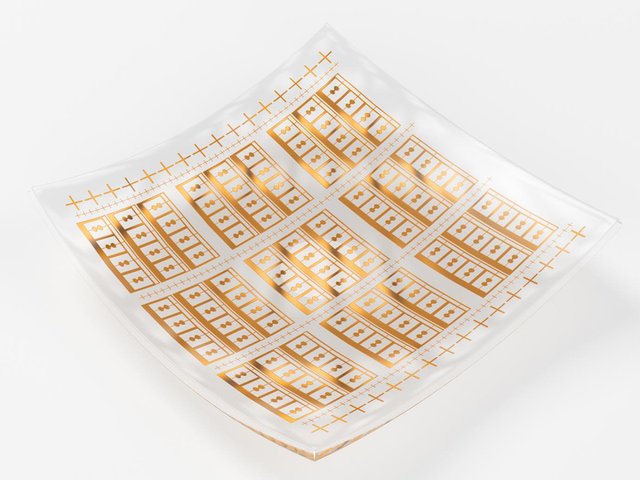
About five years ago, graphene-based photodetectors moved beyond detecting the visible and near-infrared range of the electromagnetic spectrum to push into the terahertz range. This is a big deal because terahertz radiation penetrates materials that block visible and mid-infrared light. Detecting it opened up a range of potential applications in medical diagnostics, process control, and even intelligent vehicles.
Also about five years ago, we saw research that combined graphene and quantum dots to create flexible photodetectors. While these photodetectors are great for detecting waves along much of the spectrum, they couldn’t capture terahertz radiation.
Now researchers at Chalmers University in Sweden have combined flexibility and terahertz detection into one flexible, graphene-based detector that could lead to new products such as wearable terahertz sensors for medical diagnosis.
In research published in the journal Applied Physics Letters, the Chalmers researchers developed a field-effect transistor (FET) built up on a plastic substrate in which the channel is made from graphene. The resulting flexible device can detect signals in the range of 330 to 500 GHz.
“Terahertz graphene-based FET detectors have been demonstrated on rigid substrates such as SiO2/Silicon,” said Jan Stake, head of the Terahertz and Millimetre Wave Laboratory at Chalmers. “And flexible devices (graphene and other concepts) have been demonstrated at RF/microwave frequencies.”
What the Chalmers team has done to combine flexibility and terahertz detection could also make it possible to build an Internet of Things connected via high-bandwidth 5G technologies.
In the video below, you can see a few of the applications that the Chalmers researchers believe could be aided by the new flexible terahertz detector.
According to Stake, their field-effect transistor can detect THz radiation because of the nonlinear properties of the transistor. These lead to the rectification, or conversion, of an AC current that is triggered by the incoming radiation. As a result, a response appears in the form of DC voltage between the source and the drain, which is proportional to the THz radiation power.
Since the current-voltage relationship is nonlinear, an applied AC signal (even at low power) will generate harmonics, including a DC signal. The DC voltage is directly proportional to the power of the AC field.
Stake explains that it is like a diode that detects the envelope of the incoming signal by rectifying the signal. “In our case, we couple gate and drain through a radio frequency, so the transistor is kind of equivalent to a two terminal device (a diode),” he added.
While this new detector may be the first flexible, graphene-based terahertz detector, it is not the first flexible terahertz detector. Last year, IEEE Spectrum reported on the use of carbon nanotubes to enable a flexible terahertz detector.
Stake and his colleagues, whose research at Chalmers is funded by the European Union’s Graphene Flagship, believe that graphene has specific properties that work in its favor as a flexible THz detector.
“Graphene allows for high frequency electronics thanks to promising electrical properties such as high carrier mobility,” said Stake. “Graphene is also mechanically strong (for a monolayer) and hence suitable for bendable applications.”
There are still some engineering issues that would need to be solved before such a device could be drafted into service as a sensor. Several components and functions would need to be integrated into a single device, according to Stake, and doing this will require better fabrication techniques.
In future research, Stake says the aim will be to improve transistor performance as well as demonstrate different types of THz circuits for flexible applications.
Hi! I am a robot. I just upvoted you! I found similar content that readers might be interested in:
https://spectrum.ieee.org/nanoclast/semiconductors/devices/graphenebased-terahertz-detector-gets-flexibility
Downvoting a post can decrease pending rewards and make it less visible. Common reasons:
Submit